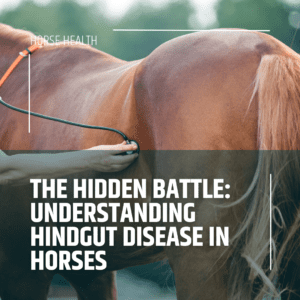What is phytase?
Phytase is an enzyme that breaks down phytic acid, which is found in plants (2). Phytic acid binds to minerals like phosphorus and calcium, making them unavailable for absorption. Phytase breaks down phytic acid, releasing these bound minerals and making them available for absorption. It’s commonly used in animal feeds to improve nutrient availability from plant-based feeds, and in the food industry to enhance the nutritional value of plant-based products (1 & 2).
So, phytase could help my horse get more benefit from its feed?
Yes, phytase could help your horse get more benefit from its feed. By breaking down phytic acid, phytase can release bound minerals, making them available for absorption by the horse (1 & 2). This can help your horse more efficiently extract essential nutrients from their diet, supporting overall health and well-being (1 & 2).
Does EquiNectar contain phytase?
Yes. The phytase within EquiNectar comes from the sprouting barley grain that is the key ingredient in EquiNectar. It is a natural source of phytase.
Sprouting barley grain is known to activate various enzymes, including phytase, as part of its natural germination process (3). This activation occurs as the seed prepares to grow, breaking down stored nutrients to fuel its development (4). By using sprouted barley as a key ingredient, EquiNectar provides a natural source of phytase, rather than relying on synthetic enzyme additives.
This natural approach to providing phytase aligns with whole-food based supplementation in equine nutrition. Sprouted grains may offer additional benefits beyond their phytase content, such as increased bioavailability of other nutrients and potential reduction of certain antinutrients present in unsprouted grains.
The phytase in EquiNectar could potentially help horses better utilise the minerals in their feed, particularly phosphorus and calcium. This improved mineral absorption could contribute to better overall nutrition, potentially supporting bone health, muscle function, and other physiological processes that rely on these minerals.
What are the benefits of adding phytase to animal feed?
The benefits of adding phytase to feed include improved nutrient availability, and better digestion of plant-based feeds (1). This can lead to enhanced mineral absorption, particularly of phosphorus and calcium. Improved nutrient utilisation can result in better growth rates, stronger bones, and overall improved animal health (1). Additionally, by reducing the amount of undigested phosphorus in animal waste, phytase can help decrease the environmental impact of livestock farming.
However, it’s important to note that the effectiveness of any supplement can vary depending on the individual horse’s needs and overall diet (5). Horse owners should consult with a veterinarian or equine nutritionist before introducing new supplements to ensure they’re appropriate for their horse’s specific nutritional requirements.
References:
[1] Dersjant-Li, Y., Awati, A., Schulze, H., & Partridge, G. (2015). Phytase in non-ruminant animal nutrition: a critical review on phytase activities in the gastrointestinal tract and influencing factors. Journal of the science of food and agriculture, 95(5), 878–896. https://doi.org/10.1002/jsfa.6998
[2] Romano, N. & Kumar, V. (2018). Chapter 4 – Phytase in animal feed. Enzymes in Human and Animal Nutrition, 73-88. https://doi.org/10.1016/B978-0-12-805419-2.00004-6
[3] Ikram, A., Saeed, F., Afzaal, M., Imran, A., Niaz, B., Tufail, T., Hussain, M., & Anjum, F. M. (2021). Nutritional and end-use perspectives of sprouted grains: A comprehensive review. Food science & nutrition, 9(8), 4617–4628. https://doi.org/10.1002/fsn3.2408
[4] Elliott, H., Woods, P., Green, B. & Nugent, A. (2022). Can sprouting reduce phytate and improve the nutritional composition and nutrient bioaccessibility in cereals and legumes? Nutrition Bulletin, 47(2), 138-156. https://onlinelibrary.wiley.com/doi/full/10.1111/nbu.12549
[5] Duberstein, K. & Johnson, E. (2015). How to Feed a Horse: Understanding Basic Principles of Horse Nutrition. Bulletin. https://extension.uga.edu/publications/detail.html?number=B1355&title=how-to-feed-a-horse-understanding-the-basic-principles-of-horse-nutrition





